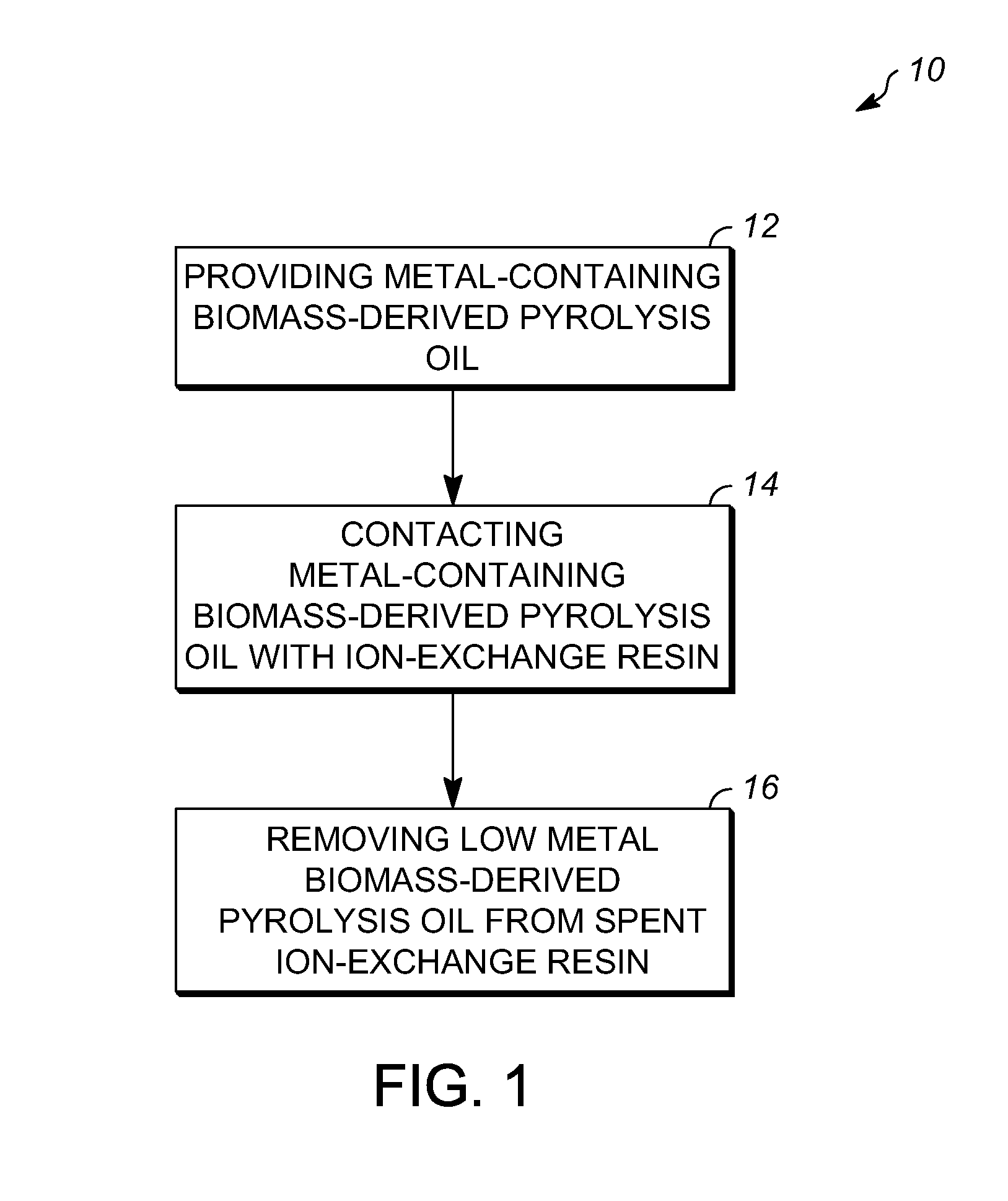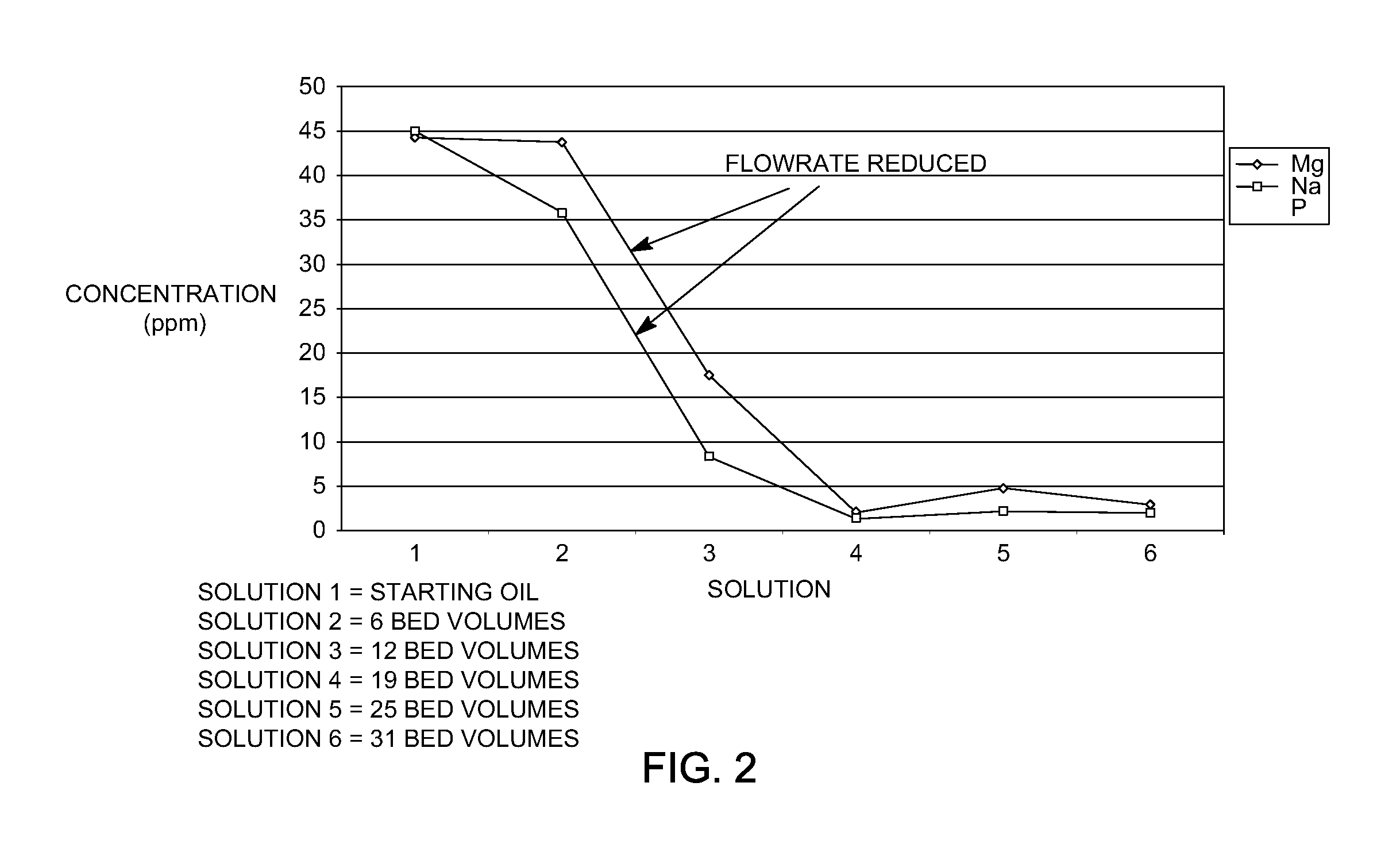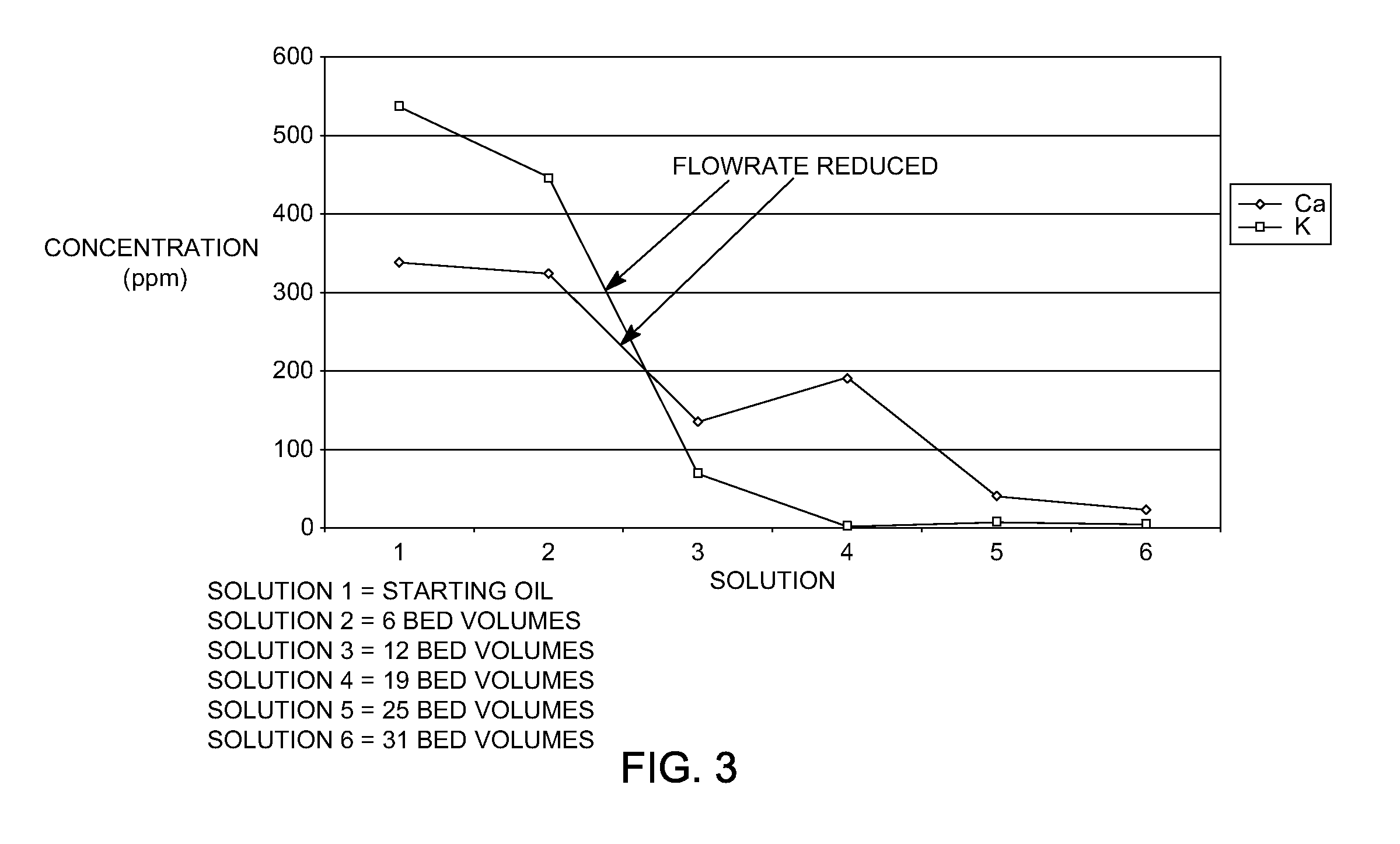Low metal biomass-derived pyrolysis oils and processes for producing the same
a biomass-derived pyrolysis oil and low metal technology, applied in the direction of ion-exchangers, waste-based fuels, fuels, etc., can solve the problems of metals in the oil fouling downstream equipment, limiting such commercial applications, and limiting such total emissions
- Summary
- Abstract
- Description
- Claims
- Application Information
AI Technical Summary
Benefits of technology
Problems solved by technology
Method used
Image
Examples
Embodiment Construction
[0013]The following detailed description of the invention is merely exemplary in nature and is not intended to limit the invention or the application and uses of the invention. Furthermore, there is no intention to be bound by any theory presented in the preceding background of the invention or the following detailed description of the invention.
[0014]Various exemplary embodiments of the present invention are directed to a process for treating metal-containing biomass-derived pyrolysis oil (hereinafter “biomass-derived pyrolysis oil” or “starting oil”) using acidic ion-exchange resins having sulfonic acid active groups that reduce the concentration of total metals in the starting oil. In general, the process removes alkali metals (sodium, potassium, and cesium) and alkaline earth metals (magnesium, calcium, and strontium) from the starting oil to prepare low-metal biomass-derived pyrolysis oils so that the oil is more suitable for use as biofuel. Transition metals (Fe, Ni, Mn) and o...
PUM
| Property | Measurement | Unit |
|---|---|---|
| pressure | aaaaa | aaaaa |
| temperature | aaaaa | aaaaa |
| exposure time | aaaaa | aaaaa |
Abstract
Description
Claims
Application Information
 Login to View More
Login to View More - R&D
- Intellectual Property
- Life Sciences
- Materials
- Tech Scout
- Unparalleled Data Quality
- Higher Quality Content
- 60% Fewer Hallucinations
Browse by: Latest US Patents, China's latest patents, Technical Efficacy Thesaurus, Application Domain, Technology Topic, Popular Technical Reports.
© 2025 PatSnap. All rights reserved.Legal|Privacy policy|Modern Slavery Act Transparency Statement|Sitemap|About US| Contact US: help@patsnap.com



